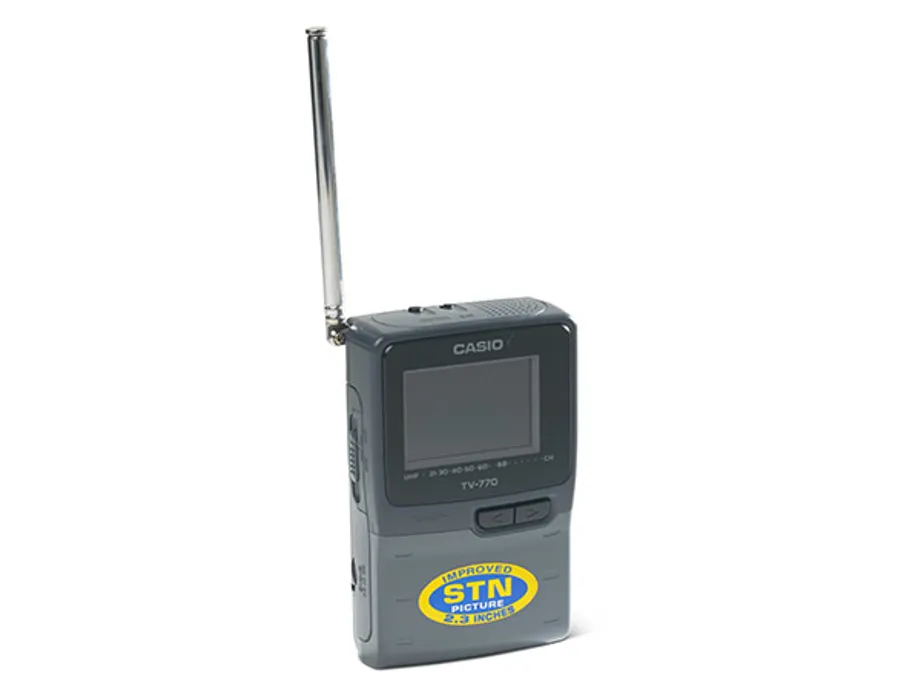Television broadcasting
Broadcasting is the distribution of audio and visual content to a dispersed audience via any electronic mass communications medium, but typically one using the electromagnetic spectrum (radio waves) in a one-to-many model.
The first British television broadcast was made by Baird Television's electromechanical system over the BBC radio transmitter in 1929.
On 2 November 1936, the BBC began transmitting the worlds first public regular high-definition service from Alexandra Palace in north London. It did this using a dual-system service, alternating between Marconi-EMI's 405-line standard and Baird's improved 240-line standard.
Portable TV
This is a Casio portable handheld analog television, model 770D, circa 2000. Early mobile television receivers were based on the old analog television signal system and were the earliest televisions that could be placed in a coat pocket. The first was the Panasonic IC TV MODEL TR-001, introduced in 1970.
The second was sold to the public by Clive Sinclair in 1977 and was called the microvision or MTV-1. The project took over 10 years to develop and was funded by British government grants.

